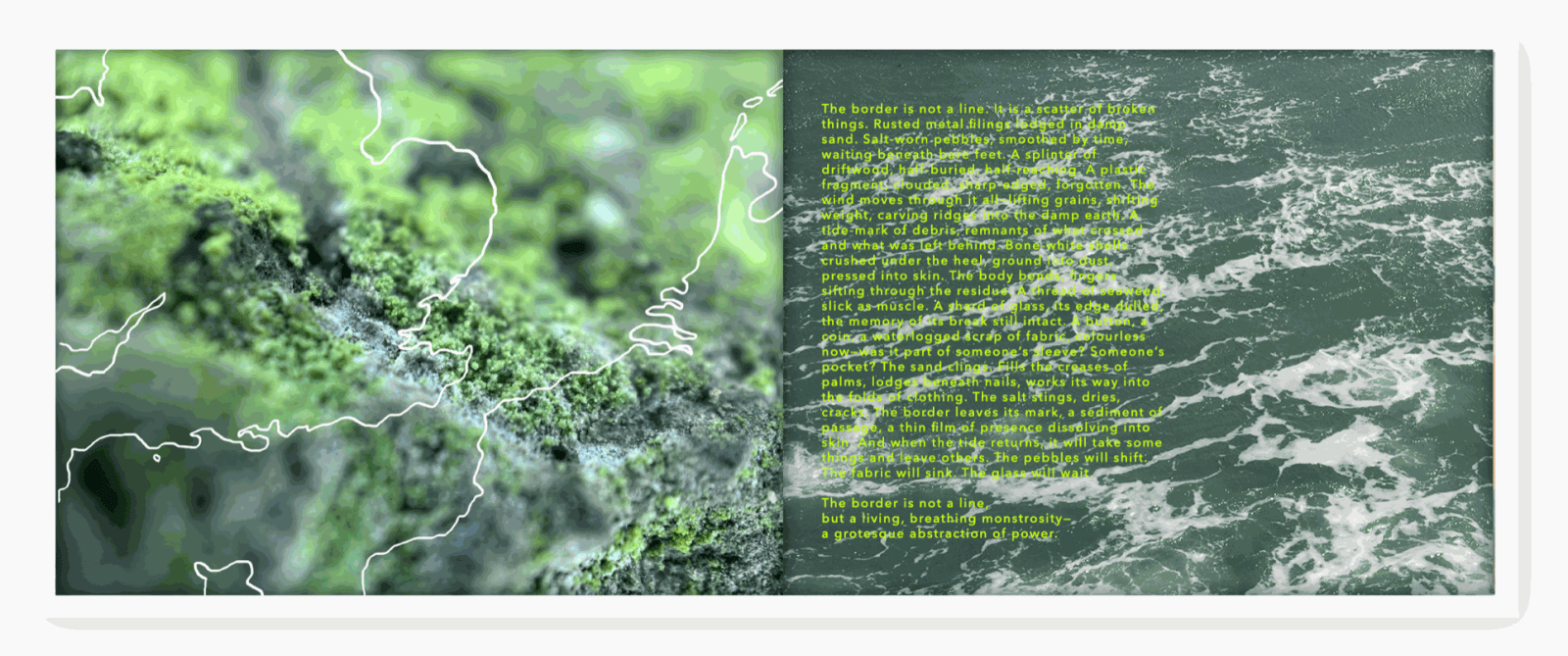Border Is Not a Line, 2025
Fragments of rusted metal, broken shells, faded fabrics, and shards of glass form the living surface of this expanded photograph. Taken in the English Channel, the image records the material and emotional traces left by forced displacement. The border here is not a line, but an accumulation—a sediment of passages, migrations, and violence. Between sand, salt, skin, and waste, the body becomes an archive. As a Chilean woman facing the British coast, the artist evokes geographic, bureaucratic, and internal borders. By asserting that the border is not a line, but a living monstrosity, she proposes a radical critique of the idea of sovereignty, belonging, and possession.
Excerpt printed in the work (translation of the original in English):
The border is not a line. It is a trail of broken things. Fragments of rusted metal embedded in the wet sand. Pebbles worn by salt, smoothed by time, waiting under bare feet. A sliver of driftwood, half buried, half stretched out. A fragment of plastic, blurry, sharp-edged, forgotten. The wind cuts through everything—lifting grains, shifting weights, digging furrows in the wet earth. A tidemark made of debris, traces of who crossed and what was left behind. Bone-white shells crushed under heels, ground into dust, pressed against the skin. The body leans in, fingers sifting through the debris. A thread of seaweed, slippery as muscle. A shard of glass, its edge worn away, but still carrying the memory of the break. A button, a coin, a sodden scrap of fabric, now colorless—could it have been part of someone's sleeve? Someone's pocket? The sand sticks. It fills the creases of palms, lodges under nails, penetrates the folds of clothing. The salt burns, dries, cracks. The border leaves its mark, a sediment of passage, a thin film of presence dissolving on the skin. And when the tide returns, it will take some things and leave others. Pebbles will shift. The fabric will sink. The glass will wait.
The border is not a line,
but a living, breathing monstrosity—
a grotesque abstraction of power.



